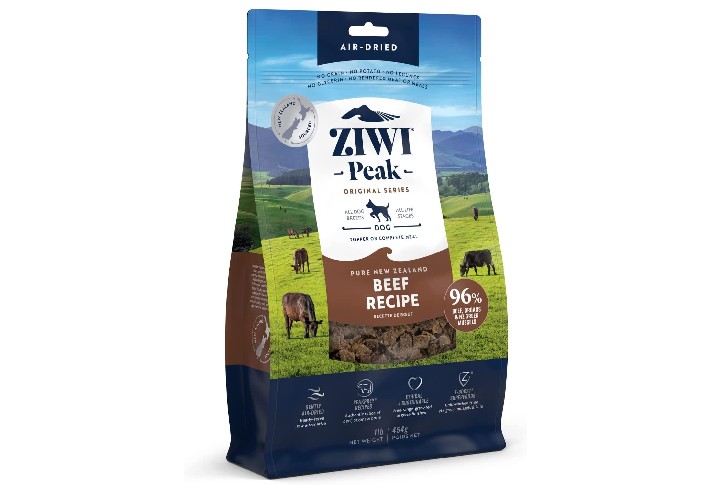- Home
- Gear Categories

ZIWI Dog Food Review
Written by Amber Rival
Last updated: Apr 25, 2024, 12:45 AM
Affiliate disclosure (read)
Our Review
Dog Food Buyer’s Guide
In selecting the best food for your dog, it is important to consider a variety of factors. The following guide will provide an in-depth look at several important elements to take into account when purchasing dog food.
Ingredient List
Look for a list of ingredients that contains only whole, healthy ingredients without any artificial flavors, colors, or preservatives. Choose foods that contain quality sources of protein such as real meat, poultry, or fish. Good sources of fat are essential for energy and healthy skin and coat. Fortunately, many brands offer organic options that are free from GMOs, hormones, and antibiotics that could be damaging to your pet’s health.
Protein Content
The protein content is an important part of your dog’s daily diet and should come from a high-quality source such as real meat, poultry, or fish. Aim for protein content of at least 18% for adults and 22% for puppies. If your dog has any dietary restrictions or special needs, look for formulas with different protein sources that are tailored to those requirements.
Fat Content
Appropriately balanced fat content is important for energy and healthy skin and coat. Make sure you select a product that fits your pet’s size and activity level. If your dog has any special needs, there are also formulas available with reduced fat content.
Fiber Content
The acceptable fiber content helps maintain digestive health by aiding digestion and keeping the digestive system running at its best. Look for formulas with just the right amount (under 5%) – too much can make it difficult to absorb vitamins and minerals, while too little can result in chronic constipation or diarrhea.
Grain/Carbohydrate Quality
When evaluating grains or carbohydrates, look for quality grains or carbohydrates such as brown rice, oats, and barley used in the formula – avoid corn wheat, soy, and fillers such as brewer’s rice or wheat middlings that may lead to gut inflammation or allergies.
Calorie Content
Take into account your dog’s size and activity level when selecting food with the right calorie density to help meet his individual needs. Consider foods designed specifically for small or large breeds as well as those labeled for active dogs vs those labeled for couch potatoes.
Price Point
With so many different dog food options available these days, it can be easy to overspend on dog food. Look for formulas that offer the best value for your money by providing high-quality ingredients without breaking the bank.
Manufacturer Reputation
Do your research and make sure the product comes from a brand with a good reputation for providing safe, high-quality products to consumers according to industry standards. Look out for reviews online or customer testimonials that can help you determine whether it’s worth investing in this particular brand or product line.
AAFCO Statement
Any dog food label should contain an Association of American Feed Control Officials (AAFCO) statement that certifies the product meets specific nutrient requirements needed by all life stages of your pup’s life – puppy, adult or senior – so your pup gets the nutrition he needs throughout his entire life.
Form Type
Dry food is often less expensive than canned food but requires more water intake. Canned food is usually more palatable but can be messier. Raw or freeze-dried diets are pricey but offer the potential benefits of freshness and higher nutrient levels than cooked kibble-based diets. Lastly, semi-moist diets tend to be higher in sugar content but may help picky eaters transition onto solid foods because they are soft and flavorful! Choose a form that best meets all of your pup's individual needs as well as your own lifestyle preferences.
Flavors/Variety
Many dogs appreciate being able to switch up their flavors regularly. Look for brands that offer a variety of flavors or formulas to keep your pet interested in mealtime. Additionally, some brands offer grain-free options which can help reduce allergens in pets who may have sensitivities or intolerance to grains.
Pros
- High-protein, nutrient-dense
- Perfectly suitable for all life stages
- Ethical and sustainable
Cons
- Not for picky dogs
